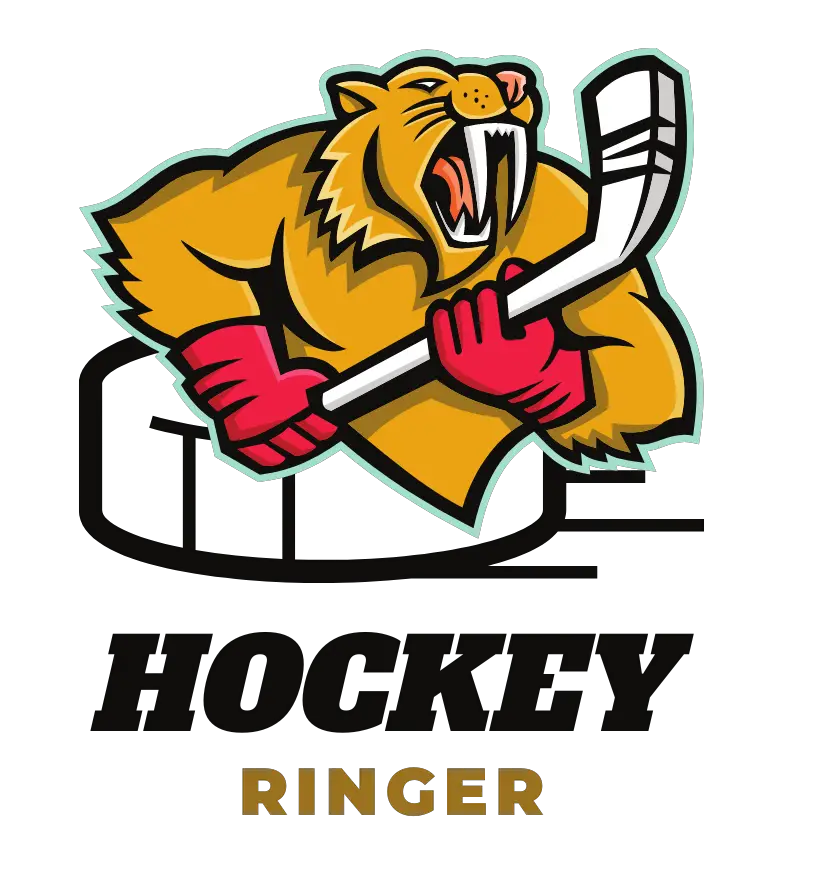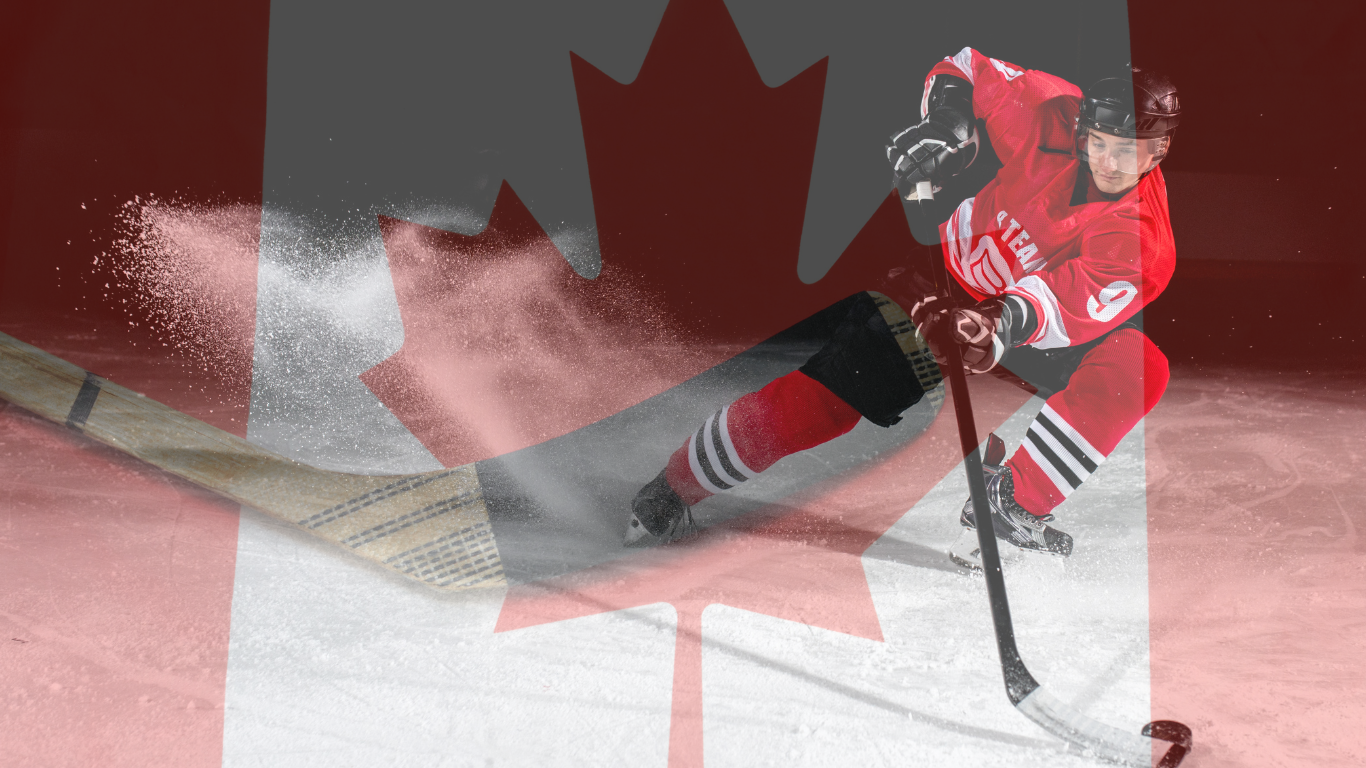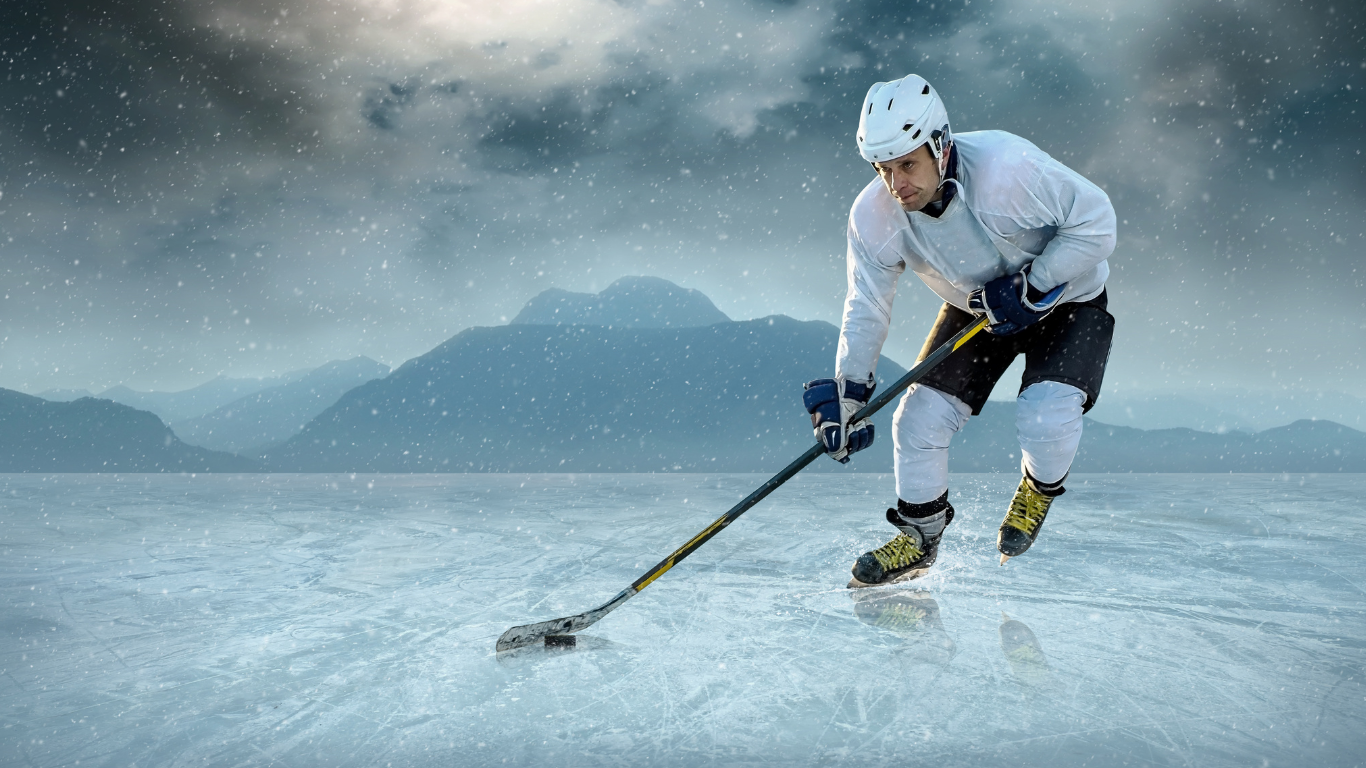It seems like a hockey rink has a lot of different lines on it. If you have ever watched a hockey game and were curious about what those lines behind the goalie’s net are, they are called a trapezoid.
The trapezoid is put into place as a restriction for where the goalies can handle the hockey puck. If a goalie ever goes behind the net and hits the puck outside of the trapezoid then there will be a 2-minute penalty put into place.

Some people will argue that the trapezoid causes more harm to the game than good, but others will defend it by saying that the trapezoid creates a more fair-played game.
The trapezoid hasn’t always been a mandatory marking on the hockey rinks. Today we are going to learn more about the trapezoid and how it came to be. Once you know all the trapezoid facts you can decide for yourself whether or not you agree with the rule put in place.
Who Inspired The Trapezoid?
They say that you have never really lived until they make a sign about something you did. For New Jersey Devil’s player Martin Brodeur, the saying should be altered to “you never really played a sport until they made a rule up after you.“
Brodeur holds a bunch of hockey records, including most wins at 691 and most shutouts at 125. He’s basically a legend on the ice. NHL general manager for Toronto Maple Leafs, Brian Burke, described Broduer’s games to be similar to a tennis match. The puck would go back and forth between two players, turning into what Brian Burke would describe as a “puck battle”.
NHL put this rule into force in hopes of showing off the talent of other players on the ice. Brodeur has come to accept that fact, even though he believed that they were taking away from something he added to the game.
In 2012, Martin Brodeur retired his NHL jersey and it now hangs in the rafters at the Devil’s stadium. Many NHL players can say they had a successful career when they hang up their jersey. Only a few can say that they had a rule put into place because of them.
When Did The Trapezoid Rule Come Into Effect?

The trapezoid rule hasn’t always been there. It’s younger than Google! The rule was put into place right before the 2005-2006 season began. NHL wanted this rule in place to help offence players have more scoring opportunities.
Trapezoid Dimensions
What are the dimensions of the trapezoid in hockey? The trapezoid begins at 2 points on the goal line that are both 6 feet away from each side of the net. A line then goes from these points to the boards behind the net.When the lines are against the board there should be 28 feet of distance between them.
This makes up the restricted area behind the net in which the goalie can hit the puck in. If the goalie hits the puck outside of that area than a 2-minute penalty will apply.
What Is The Significance Of The Trapezoid?
The trapezoid is there to limit the goalie’s ability to shoot the puck away from the net. This creates a more challenging game and allows for more players to be able to show off their talent.
Before this rule of the trapezoid came into place, a goalie with extraordinary stick handling skills would be able to skate into the corner and pass the puck to one of their team members. This made it so much easier for the goalie to help their team to keep the puck on the opposite side of the rink.
Now that the trapezoid is there the game has become a lot more challenging. It won’t be so easy for the goalie to get the puck away from the opponents anymore. This makes the game a lot more exciting to watch for the audience. People got bored watching the same couple of players shoot a puck around.
Does The Trapezoid Help Offence Players?
Before the trapezoid rule came around when an offence player shot the puck across the rink the goalie was able to swoop in and shoot that puck over to a player on their own team. Now that the trapezoid is there to prevent that from happening the offence players have a better chance of catching up to the puck.
When goalies were coming out to shoot the puck, they were taking away the opponent team’s chance of gaining possession of the puck in the offensive area. The trapezoid effectively allows the opposing team to make their way down to the puck and play a fair game.
Before the trapezoid was there, the goalies being able to hit the puck ended up causing too many players to build up at the blue line in the center. In an attempt to get the puck over the blue line into the offence, all the players ended up hovering around that line.
The trapezoid has helped ensure that the players remain in all areas of the ice and creates a more exciting game for the audience to watch.
Does The Trapezoid Help With Scoring?
The number of goals scored in the hockey season has gone up since the trapezoid rule came into effect. The NHL is continuously making adjustments to its rules in order to speed up the game.
During the 1990s-early 2000s the NHL went through a “dead puck era“. There were very few goals scored during this period because the goalies were able to help out their defensive players. This made it nearly impossible for offensive players to score a goal.
There was a lockout in 2004, and this is when the idea came around to put the trapezoid into place. When the new 2005-2006 season began, the number of goals scored started to increase. This made viewers more excited to watch the game and more likely to spend money on tickets.
5 Reasons Why The Trapezoid Might Not Be The Best Idea
The trapezoid rule is fairly new, so adjustments may need to be made still. There has been some arguments on why the trapezoid isn’t a good rule to have in place.
1. Increases Injuries
Now that the goalie is unable to help the defense players, more injuries are caused by the offence players when they body check the defense.
2. Not All Goalies Can Shoot
Not all goalies are great at stick-handling. Allowing goalies to come out of range at least lets them have more fun during the game.
3. Boring For The Audience
Some of the audience members will claim that the trapezoid makes hockey more boring to watch. Offence players can now simply shoot the puck in the corner and retrieve it to shoot into the net. At least when the goalie could help defense there was more drama to the game.
4. Confuses The Kids
There are so many rules to explain to someone who is just learning about hockey. This new trapezoid rule just threw an extra does of confusion their way.
5. Goalies’ Skills Can Decrease
Since the goalie can’t help out as often they get less practice on their passing techniques. They get bored just staying in one spot waiting for some action.
What Do Goalies Think About The Trapezoid?
The majority of goalies are hoping for the death of the trapezoid to happen during their hockey careers. Their skills are decreasing and they are becoming increasingly bored during the game since they can no longer help the defense out.
Many goalies want to see this rule go out the window because the nature of competitive hockey has changed. The players have become stronger and faster with better training techniques. That clutch and go mentality that inspired the trapezoid to be put into place is no longer as much of a concern.
Rather, they feel that goalies have way too much to look out for that they can’t be expected to make sure they are within a certain line to hit that puck. Every second counts in this game.
In 2011 NHL researchers placed studies and found out that when the trapezoid was removed there wasn’t a difference made in the advantages that the goalie had. This is one of many reasons most goalies would prefer for the game to go back to how it was before the trapezoid came along.
What’s The Point Of The Trapezoid In Hockey: Final Thoughts
The trapezoid was originally put into place to make the game of hockey more challenging. They thought by eliminating the goalie’s ability to snag the puck from the corners of the rink that there would be more of a challenge put in the game.
This did make the game more exciting for the audience since they got to watch more of the hockey players show off their talents on the ice. However, goalies didn’t enjoy the limitations this rule put in place. Since the trapezoid came around they feel bored spending the whole game confined to within the lines.
Do you think the trapezoid rule is a good idea? Let us know in the comments.



